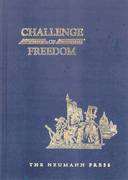The Land of Our Lady Catholic history textbook series are reprints of books originally published in the 1950s. The series is obviously Catholic throughout with unit introductions related to Mary the Mother of Jesus, coverage of Catholic missionary efforts, and a consistently Catholic worldview throughout. This is the best series I have seen for those looking for such elements in a history series for the elementary grades, although I list below a few cautions about the eighth-grade text.
The first book in the series, Founders of Freedom, provides the background in world history. Intended for fourth graders, this text begins with a biblically-based review of God's creation of Adam and Eve, then continues through ancient civilizations, Egyptians, Greeks, and Romans with special focus on the birth and growth of Christianity. It briefly covers some world history events under units organized around themes having to do with Christianity and its impact upon civilization.
The rest of the series focuses on United States History with four more texts for grades 5-8. Bearers of Freedom, suggested for fifth grade, begins with the growth of world trade, explorations, and the discovery and settlement of the New World.
Leaders of Freedom for sixth grade begins with growing discontent in the American colonies, then continues through the revolution up into the early 1800s. The text of the Declaration of Independence and Constitution are included at the end of this text as well as the next two texts.
The Challenge of Freedom picks up with the early 1800s and the populist election of Andrew Jackson, then continues through the expansion of the United States, the Civil War, and Reconstruction. Immigration, science and technology, agriculture, education, and culture are also covered for that time period.
Guardian of Freedom covers from the post-Civil War period up into the 1950s. It is important to note that the political view in this particular text is supportive of the government's expansion into the social arena as well as participation in the United Nations. It also has a very strong anti-Communist flavor as you might well expect in the period just entering into the Cold War. This last text should be used with some caution because of its lack of long-range perspective on issues (e.g., failure of the Great Society and the global government goals of the United Nations).
Throughout this series, Church history and "social action" receive more attention than is typical of history texts for elementary grades, even from most Protestant publishers. As is true of most older texts, the content is more extensive than newer texts. These are all beautiful and durable hardcover books. Black-and-white illustrations, photos, and maps add visual interest. At the end of each chapter are vocabulary lists, discussion questions, quizzes, and, sometimes, activities. At the end of each unit is a summary of unit highlights plus a mastery test. Inexpensive answer keys are available from Kolbe Academy.













